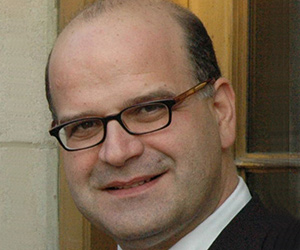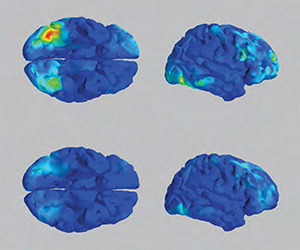Katsaggelos Featured in 2013 Northwestern Annual Research Report
The research of Aggelos K. Katsaggelos, AT&T Professor, titled, "An Abundance of Applications for Signal Sparsity," is highlighted in the 2013 Northwestern Annual Research Report.
 The research of Aggelos K. Katsaggelos, AT&T Professor, titled, "An Abundance of Applications for Signal Sparsity," is highlighted in the 2013 Northwestern Annual Research Report.
The research of Aggelos K. Katsaggelos, AT&T Professor, titled, "An Abundance of Applications for Signal Sparsity," is highlighted in the 2013 Northwestern Annual Research Report.
 As seen in the image, a result of recent work conducted by Prof. Katsaggelos’s team, EEG and fMRI signals are fused to localize the sparse neuronal activation highlighted in warm colors, demonstrating the regions involved in visual perception.
As seen in the image, a result of recent work conducted by Prof. Katsaggelos’s team, EEG and fMRI signals are fused to localize the sparse neuronal activation highlighted in warm colors, demonstrating the regions involved in visual perception.
In the Image and Video Processing Laboratory, Prof. Katsaggelos, conduct research at the intersection of multimedia signal processing, networking and communications, computer vision, and machine learning. They have investigated, for example, signal recovery, multimedia compression and transmission, and a number of other fundamental topics.
A central theme in their recent investigations is the notion of signal sparsity. A signal is sparse either in its native domain or in a transformed domain. For example, an image of the stars is sparse because only a few of its pixels have nonzero values. Similarly, an image of a natural scene can be represented very accurately by only a few nonzero wavelet coe"cients. Prof. Katsaggelos and his team have deployed this simple concept of sparsity to develop solutions to important problems in signal processing and machine learning. For example, supported by the Department of Energy and in collaboration with the Argonne National Laboratory, the team has developed cutting-edge technology to acquire passive millimeter-wave images with a portable single-pixel camera.
Passive-imaging technology provides superior-quality information about ground-based targets under all weather conditions, whereas traditional optical systems (e.g., visible and infrared) require clear atmospheric conditions for reliable operation.The technology has great potential impact because of its many applications, such as remote sensing of the earth’s resources, landing aircra# in optically obscure weather, and security-point inspection for concealed weapons.
In another application, sparse technology has been used to fuse EEG and fMRI signals in order to accurately determine brain activity when a speci$c task is performed. !is not only allows for a better understanding of the highly complex architecture of the human brain, but also helps in diagnosis and prognosis of mental conditions and disorders via the application of machine learning tools and techniques. Further sparsity applications that the lab has explored include video surveillance, recommender systems (information $ltering systems used to predict the “rating” or “preference” that users would give to an item), and detection of abnormalities in computer networks.
The Northwestern Annual Research Report is published annually by the office of the Vice President of Research, Jay Walsh.
